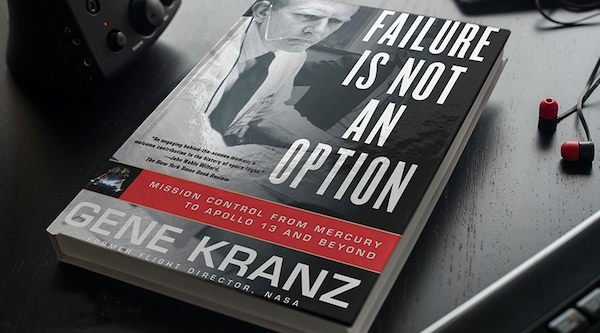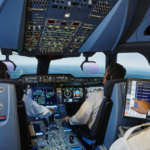Gene Kranz’s ‘Failure is Not an Option’ is a book all pilots should have read at least once in their lives. Behind the statement of being Tough and Competent, tough that you are always accountable for what you do or fail to do and competent, that you never take anything for granted and never be found short in your knowledge or skills, it also speaks about ‘decision-making’.
Decision-making is a crucial process for all pilots: it’s the process of making choices by identifying a problem in gathering information, assessing alternatives, weighing risks and benefits, taking action, having the right level of communication (and delegation) before reviewing a decision in due time.
On their way to the moon, despite an emergency no one had seen before (after the astronauts performed a routine procedure, a spark caused an explosion in one of the oxygen tanks), the Apollo 13 flight and ground crew were able to change their circumstance from ‘having’ a problem to a situation that ‘had’ a problem.
Mission controllers in Houston quickly had to diagnose the actual problem and work far outside of the box to get the crew home safely; and they did. It was all thanks to teamwork and resilient leadership from people like Gene Kranz, one of the Mission Control flight directors during the Apollo program. This is what any flight crew can learn from the incredible Apollo 13 crisis that had lasted 4 days:
OVERCOME THE INITIAL SHOCK
When reports from the Apollo crew – ‘Houston, we’ve had a problem here’ – reached the mission control center, combined with multiple alarming telemetry readings on the flight controller’s consoles, there was a moment of startle: ‘What is going on here?’
The controllers had to overcome the urge to jump to conclusions, a major threat when problems start to develop at the speed of light. Key point: there is a famous saying amongst pilots: ‘When you see something bad happening, sit on your hands initially.’ In other words, there is no place for impulsive behavior during a crisis.
IDENTIFY THE PROBLEM
Once the initial shock had settled the controllers and crew could focus on preparing a plan. The leader (Gene Kranz) assembled all the information from his resources (Apollo crew, controllers, telemetry etc.) and tried to identify the main problem. As the big picture was not yet clear immediately, several controllers started containing isolated problems while awaiting the final diagnose. Having put all of the pieces of the puzzle together, it became clear that an explosion had greatly diminished vital resources such as oxygen and battery power. Key point: when the diagnose of the problem is agreed on, rules and procedures have to be established.
DISCUSS MAIN OPTIONS
Two main options emerged, both containing risks: making an immediate ‘180-degree turn’ back to the earth was the quickest way to get back home, but it meant that the astronauts had to abandon their lifeboat: the lunar module. A second option was to continue towards the moon and use the moon’s gravitational pull to establish a trajectory back to the earth. This was not the quickest way out of the crisis but ensured preservation of resources and bought valuable time for the controllers who needed to design a return plan from scratch. Key point: the quickest way out is not always the best one. Force the team to investigate several options.
RISK AND BENEFIT ANALYSIS
Risk and benefit analysis is the comparison of the risk of a situation to its related benefits. On this occasion, focusing what still works and not only on what is broken can buy the time needed to come to high quality decisions in moments of crisis. All parties had to focus on what was still working and useful: the lunar module could be used as a lifeboat as it still had enough oxygen supply whereas the command module with its protective heat shield was needed to re-enter the earth’s atmosphere. Key point: no one shall be tempted to take the seemingly easiest way out.
USE HIGH-QUALITY COMMUNICATION & DELEGATE
After the explosion, all the flight controllers started shouting out the problems that arose in their domains. Gene Kranz quickly ordered silence and order in the mission control room. He only wanted ‘limited status updates’ from his team. Kranz clearly delegated tasks. He gave his team members the trust and decision power they needed to do their work. The flight controllers had, in the midst of all the chaos around them, a starting point from where they could to get to work. There are two key points here: The first one is to make sure the team members only communicate what is really important and to aim for high quality-communication, not high-quantity communication. The second one is to avoid micro-managing and clearly distribute + delegate tasks.
THINKING OUT OF THE BOX BY RE-EVALUATING A DECISION
What the team does have to take into account is that previously established procedures may become obsolete or incorrect and the course of action might need to be altered. Key point: It is important to keep a flexible mindset and prepare to adapt then plan when the conditions change.
The ‘Human Factors’ section of Smartcockpit.com will enable you to find the relevant information you’re looking for about decision-making, CRM, discipline and many other crucial aspects of the pilot’s profession.






